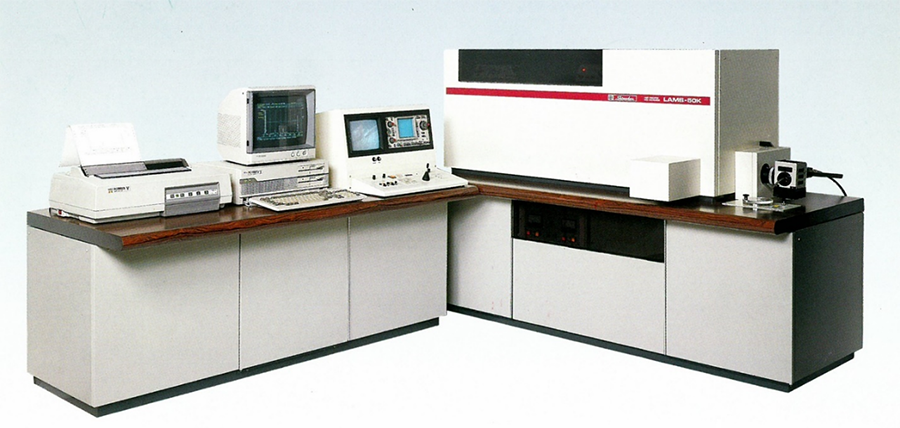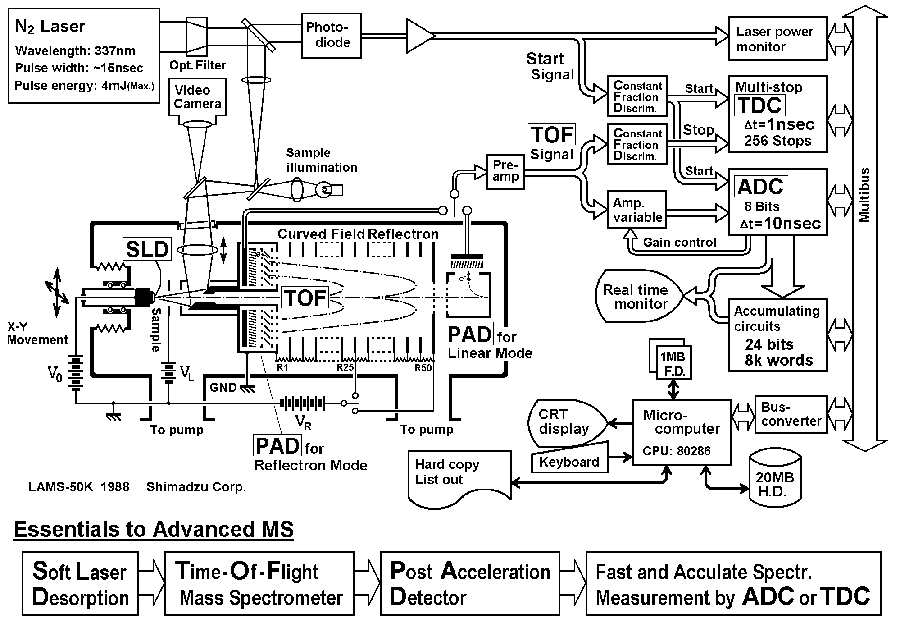May 27, 2024 | News & Notices LAMS-50K Mass Spectrometer Recognized as IEEE Milestone
Shimadzu Corporation's LAMS-50K laser ionization mass spectrometer, released in February 1988, has been recognized as an IEEE Milestone by The Institute of Electrical and Electronics Engineers (IEEE), an international society in the field of electricity and electronics. The reason for this prestigious certification is the significant impact of the LAMS-50K. "In 1988, Shimadzu Corporation released a mass spectrometer that could measure macromolecules whose molar mass was at least 50,000 grams per mole. As the world's first commercially available device that applied soft laser desorption ionization techniques, it led to new pharmaceuticals and diagnostic capabilities in the fields of molecular biology and medicine. Koichi Tanaka, the key developer of this technology, shared the 2002 Nobel Prize in Chemistry."
IEEE Milestone is a prestigious initiative that commemorates "significant technological achievements more than 25 years after its birth." Notable past certifications from Japan include directional shortwave antennas, Kurobe River No. 4 Hydropower Plant, Tokaido Shinkansen, and 20-inch Diameter Photomultiplier Tubes, QR code. The IEEE Milestone presentation ceremony, where the LAMS-50K will be honored, is scheduled to take place in Kyoto City in November this year.
LAMS-50K consists of several elemental technologies developed through extensive research and development at Shimadzu in October 1984. These technologies focused on the production of high-mass ions through laser ionization and its measurement technology. The first breakthrough was a method of ionizing large molecules such as proteins without breaking them, achieved through soft laser desorption (a technique that the Nobel Prize in Chemistry awarded to Koichi Tanaka, Executive Research Fellow of the Company). The second was the implementation of Time-of-Flight Mass Separation technology (TOF-MS) using an inclined electric field reflectron, which allowed for the precise separation of molecules from low to high mass with high accuracy. The third was the development of a Post-Acceleration Detector (PAD) that efficiently converts large molecular ions into electrical signals. Lastly, a Time to Digital Converter (TDC) circuit and an Analog to Digital Converter (ADC) circuit were integrated for rapid signal integration with high temporal resolution over ever-changing data. These innovations collectively enabled mass spectrometry of massive ions, a feat that was previously deemed impossible.
The LAMS-50K, delivered to City of Hope in 1990, has played a pivotal role in the study of cancer and other diseases. The launch of this product marked a significant milestone in the use of mass spectrometry for protein analysis through laser irradiation, a technique that has since become widely adopted in scientific research.

Photo: LAMS-50K Mass Spectrometer

Diagram of LAMS-50K System
(Diagram created in 1988 by Koichi Tanaka from Shimadzu Corporation appended with explanatory text)
Related Links
Press Release of the Royal Swedish Academy of Sciences on the 2002 Nobel Prize in Chemistry
https://www.nobelprize.org/prizes/chemistry/2002/press-release/
Paper on Nobel Prize Lecture (Nobel Lecture)
https://www.nobelprize.org/uploads/2018/06/tanaka-lecture.pdf
For more information about IEEE Milestone, click this link.
For more information about the LAMS-50K IEEE Milestone,
click this link to a special page of Koichi Tanaka Mass Spectrometry Research Laboratory.


